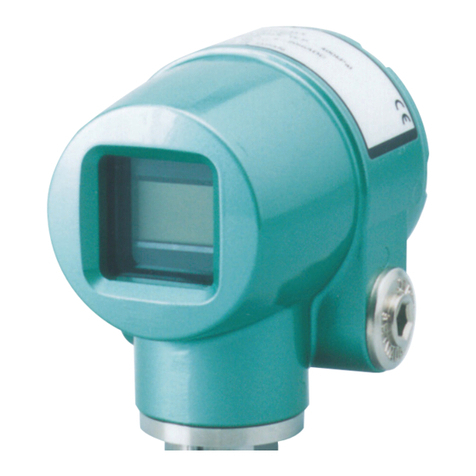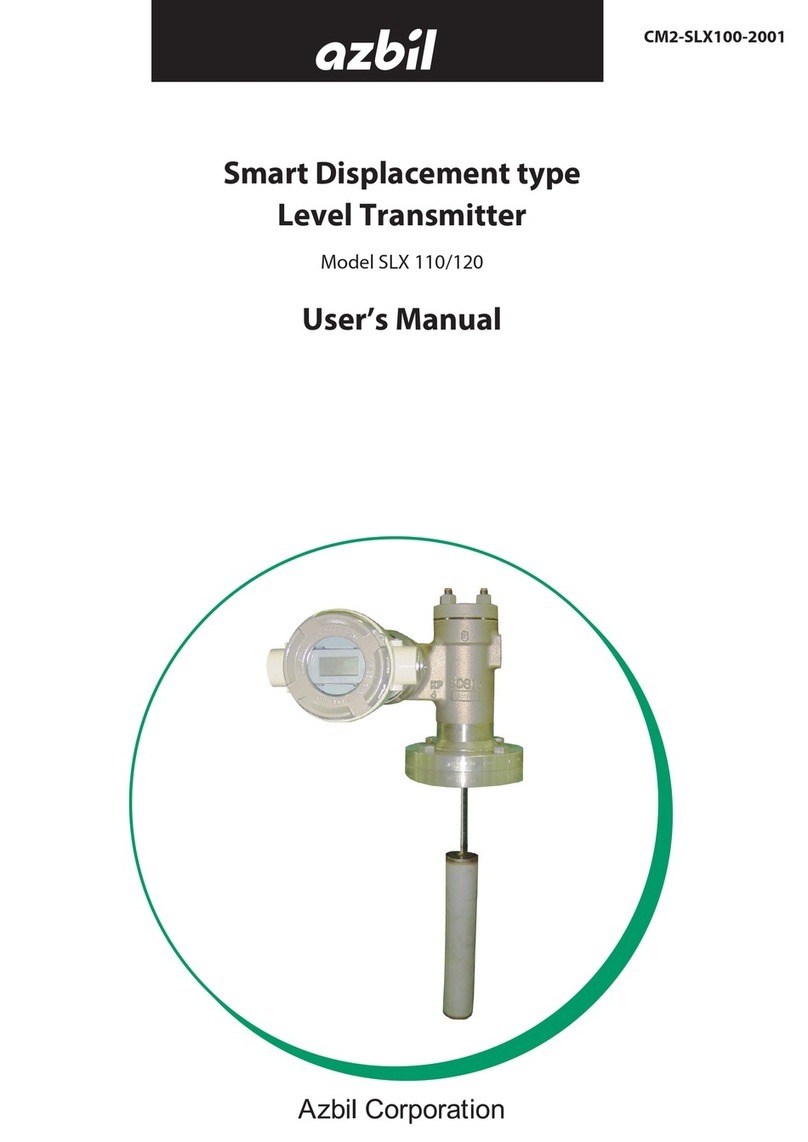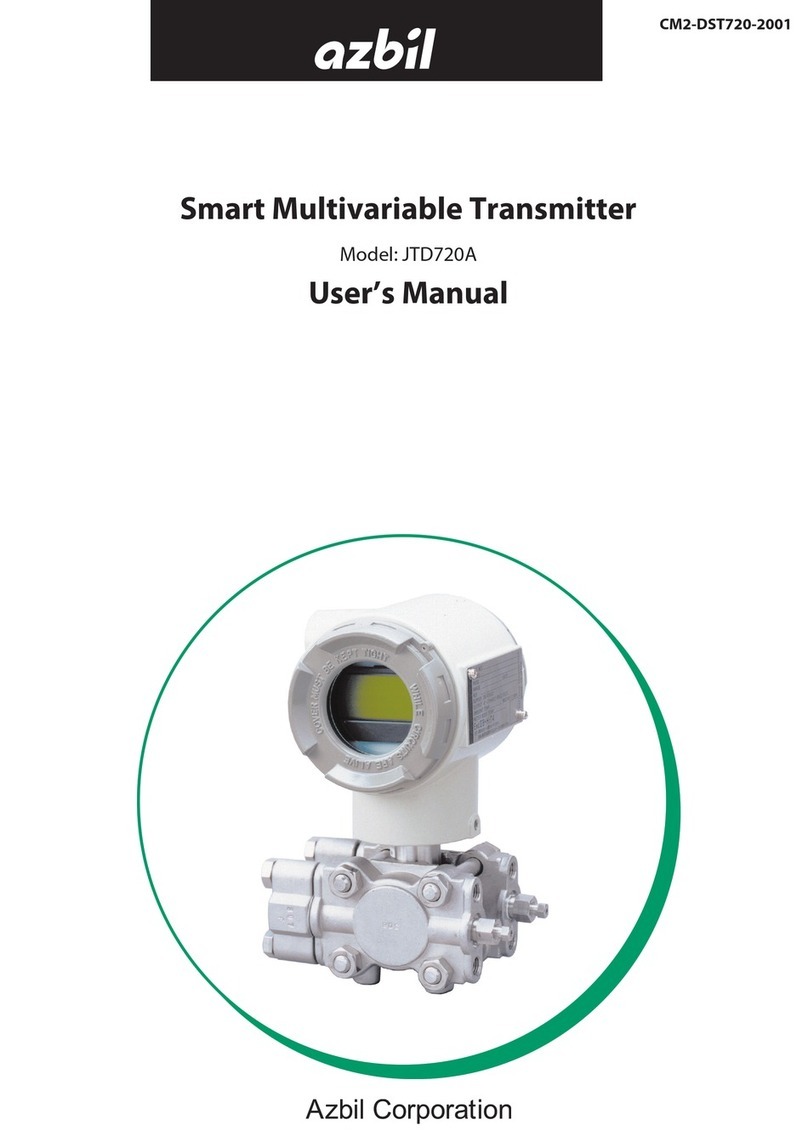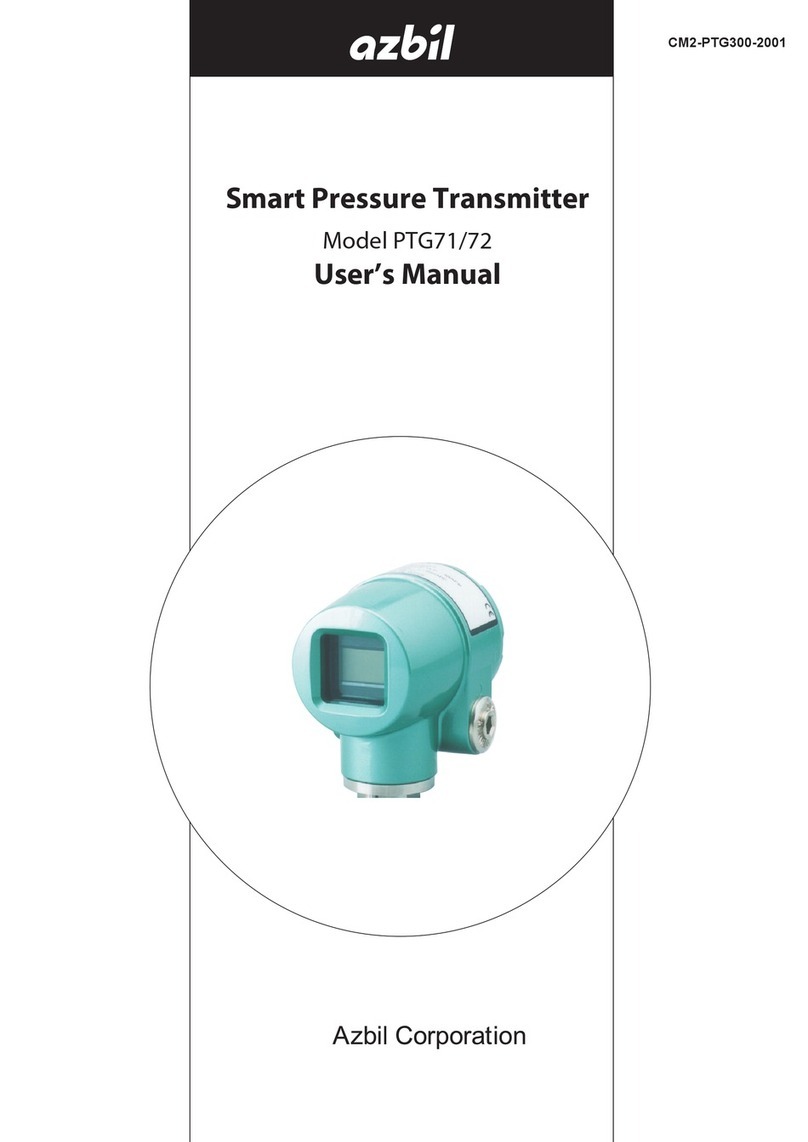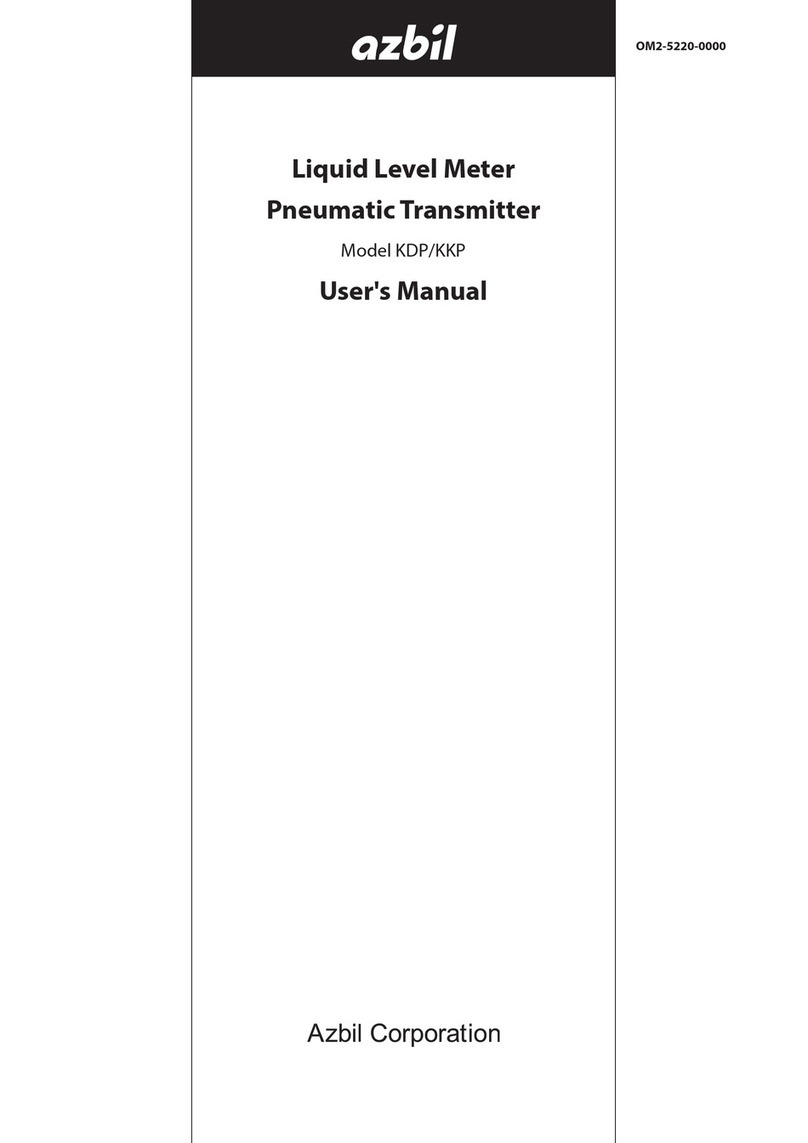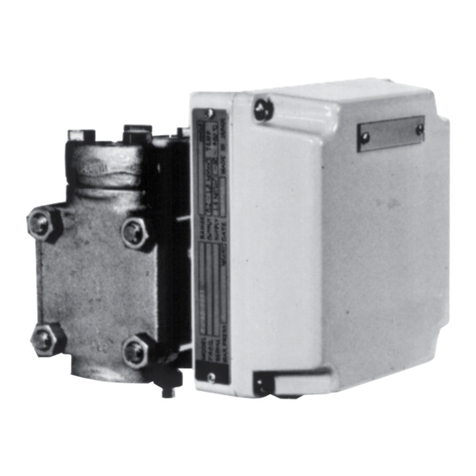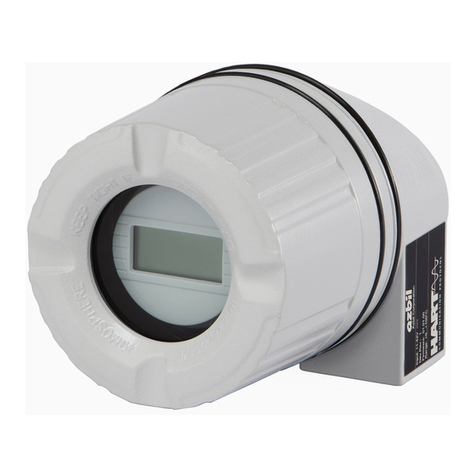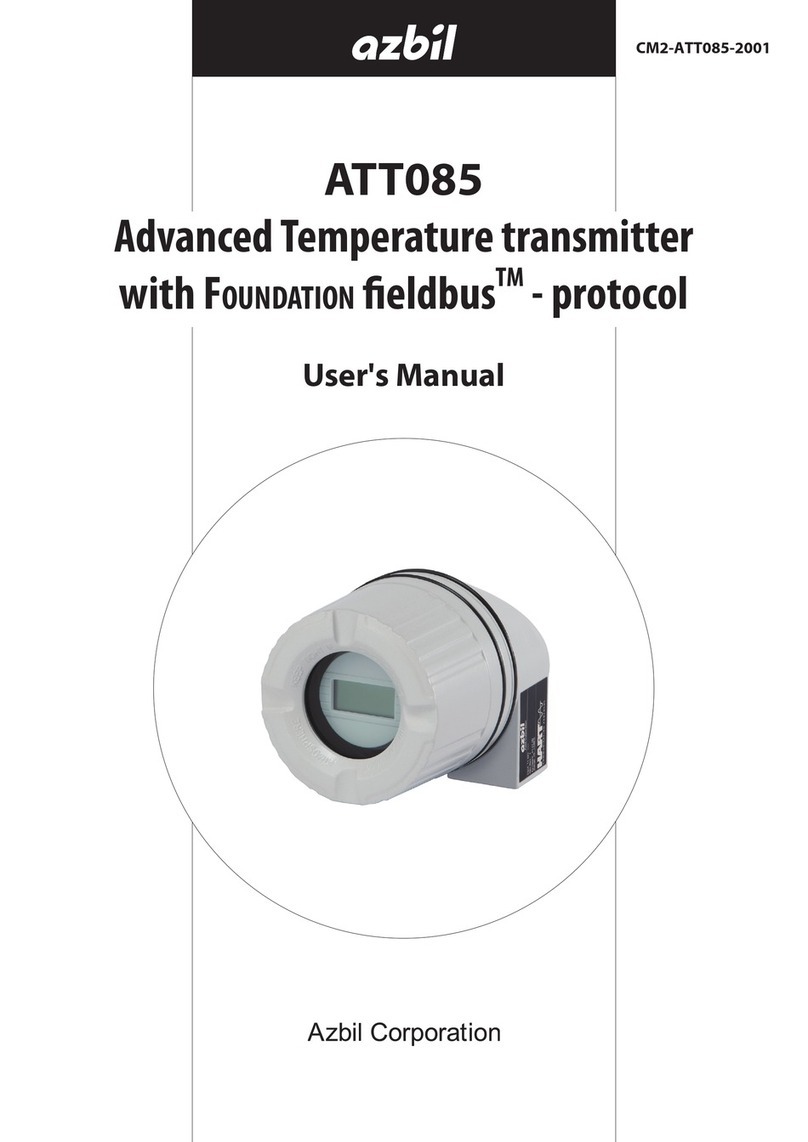
iv
Introduction
Wiring Precautions
Caution
Do not perform wiring work, turn on the electricity, etc., when your hands are wet. Also, do not perform
hot swapping. There is a risk of electric shock. Do this work with dry hands or wearing gloves, and with
the electricity turned off.
Be sure to thoroughly check the specifications to ensure that the wiring is carried out correctly. Incorrect
wiring can cause instrument damage or malfunctions.
Supply power correctly based on the specifications. Inputting an incorrect power supply can damage the
instrument, and the individual doing the work can become injured.
Maintenance Precautions
Warning
When detaching this product from the process for maintenance and the like, clear vents and drains in
order to remove residual pressure and residues in the measurement target. In addition, when clearing
vents and drains, check the direction in which material will come out in order to avoid any contact with
the human body. There is a danger of scalding and other harmful health effects. If the measured fluid is
harmful to the human body, take safety measures such as wearing goggles or a mask so that it does not
adhere to the skin or the eyes, become inhaled, etc.
When using the product in a hazardous area, do not open its case cover, electrical conduits, etc. There is
a risk of explosion, etc.
When using the product in a hazardous area, check that the threaded parts of connecting surfaces on the
case cover, electrical conduit connection port, etc., are not corroded, deformed, cracked, or otherwise
damaged. If its explosion-proofing performance is impaired, the product can become an ignition source,
and there is a risk of explosion. Perform periodic maintenance on this product, and replace it with a new
one if corrosion etc., reaches significant levels.
Replace damaged seal gaskets. If this product is operated in a damaged state, it will not be possible to
ensure sufficient performance of the seals, and there is a danger that the measured fluid will spurt out,
possibly resulting in scalding and other harmful health effects.
If evidence of corrosion is observed in pressure-bearing parts such as bolts, nuts, cover flanges, and
adapter flanges, replace them. Parts whose pressure-resistance has decreased can break and are thus
dangerous. There is also a risk of physical injuries such as bruises and lacerations.
Be sufficiently careful of residues from measured fluids which are left behind in the product. If materials
which affect the human body are contained in these residues, harmful effects on human health could
result. When performing maintenance on a product which has been uninstalled, first clean the pressure-
receiving parts adequately.
Caution
Do not disassemble or alter this product. Doing so may lead to product failure, electric shock, etc.
Explosion-proof instruments cannot be inspected or disassembled in hazardous areas. In addition,
explosion-proof products cannot be used after having been altered.
If this product is used with high-temperature fluids, do not carelessly touch the body of the product.
It will likely have become hot, so there is a risk of sustaining burns.
When this product is no longer to be used, dispose of it in accordance with local regulations, treating it as
industrial waste. Also, do not reuse this product in whole or in part.
